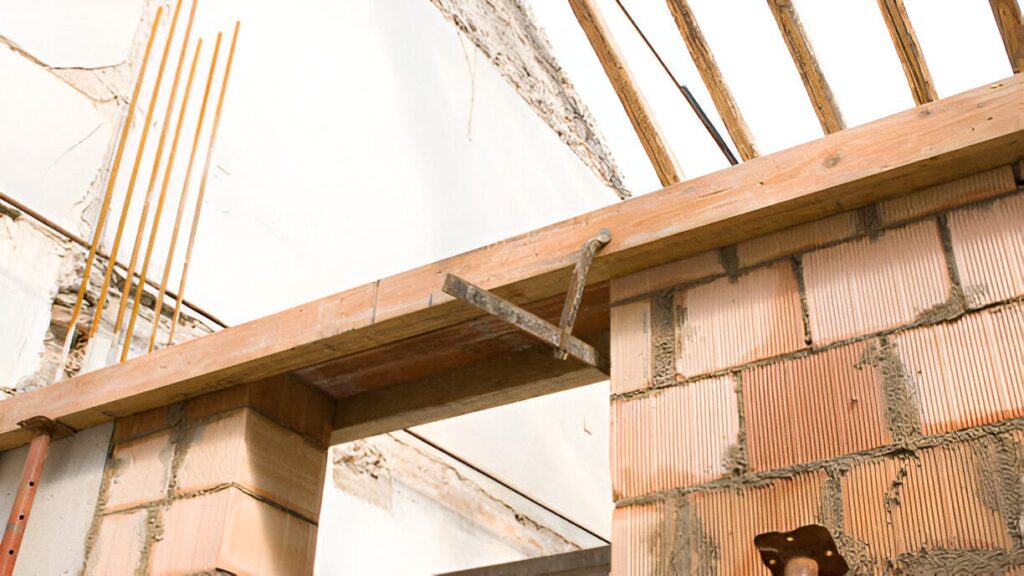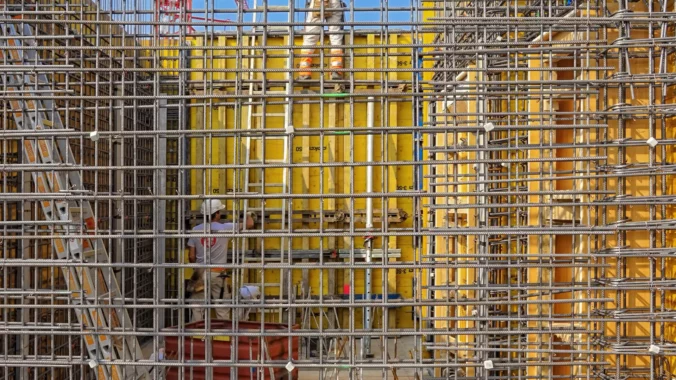Formwork LVL, or Laminated Veneer Lumber, has become an increasingly popular choice for construction projects in various sectors. By understanding what Formwork LVL is, its benefits, and how it compares to other materials, builders and architects can make informed decisions that enhance their projects. This article explores the many advantages of using Formwork LVL and its role in modern construction.
Understanding Formwork LVL: A Brief Overview
What is Formwork LVL?
Formwork LVL is an engineered wood product made by bonding layers of thin wood veneers together under heat and pressure. This process creates a material that offers superior strength and stability compared to traditional timber. Formwork LVL is designed specifically for use in casting concrete structures, providing the necessary support and shape during the curing process.
This product is praised for its minimal shrinkage and warping, resulting in consistent performance throughout its application. Its versatility makes it suitable for a wide range of projects, from residential buildings to commercial infrastructures. Additionally, Formwork LVL is often favored in projects where weight is a concern, as it provides a lightweight alternative to heavier materials without compromising on strength. This characteristic can significantly reduce transportation costs and ease the handling process on construction sites.
Key Components of Formwork LVL
To fully appreciate the advantages of Formwork LVL, it’s essential to understand its key components:
- Wood Veneers: The core building blocks are layers of thinly sliced wood, which are carefully selected for their properties.
- Adhesives: Durable, moisture-resistant adhesives bond the veneers, ensuring that the finished product can withstand environmental changes.
- Manufacturing Process: The process involves advanced technology that ensures consistent thickness and quality of the final product.
These components contribute to the strength, durability, and reliability of Formwork LVL, making it an excellent choice for various building applications. Furthermore, the environmental impact of Formwork LVL is often less than that of traditional materials, as it utilizes sustainably sourced wood and can be manufactured with a lower carbon footprint. This eco-friendly aspect appeals to many modern construction projects that prioritize sustainability and responsible material sourcing.
Moreover, the adaptability of Formwork LVL allows it to be customized for specific project requirements. Builders can easily modify the dimensions and configurations to suit unique structural designs, enhancing its appeal in both residential and commercial sectors. As construction techniques evolve, the demand for innovative materials like Formwork LVL continues to grow, promising a future where efficiency and sustainability go hand in hand in the building industry.

The Role of Formwork LVL in Construction
Formwork LVL in Building Infrastructure
In the context of building infrastructure, Formwork LVL serves as a critical element. It is often used to create molds for concrete, supporting various structural components such as beams, walls, and slabs. Its high strength-to-weight ratio allows for lighter, more manageable forms that can be easily manipulated on-site.
Additionally, the precision of Formwork LVL ensures that the concrete sets accurately within the specified dimensions, reducing the likelihood of construction errors and resulting in a more reliable structure. This precision is particularly important in large-scale projects where even minor discrepancies can lead to significant structural issues down the line. Furthermore, the durability of Formwork LVL means that it can withstand the rigors of repeated use, making it a cost-effective solution for contractors who require reliable materials that can endure multiple pours before needing replacement.
Formwork LVL in Architectural Design
Architects increasingly leverage Formwork LVL for its aesthetic versatility. Its ability to be customized and shaped allows for innovative design approaches that can enhance a building’s visual appeal. Moreover, Formwork LVL can be finished to resemble natural wood, offering an appealing look without compromising structural integrity. Find more about leverage at https://study-abroad-with-leverage-edu.en.softonic.com/android
Another benefit is that its smooth surface reduces the need for extensive finishing work on the concrete once poured, saving time and labor costs during the construction process. Architects find that the aesthetic freedom combined with the functional benefits makes Formwork LVL an exceptional choice for modern designs. This versatility also extends to sustainability, as many manufacturers are now producing Formwork LVL from responsibly sourced timber, aligning with the growing demand for eco-friendly building materials. By incorporating Formwork LVL, architects can create structures that are not only visually striking but also environmentally conscious, appealing to a market that increasingly values sustainability in construction practices.
The Benefits of Using Formwork LVL
Durability and Strength of Formwork LVL
One of the most significant advantages of Formwork LVL is its durability. Unlike traditional timber, which can warp or crack over time, Formwork LVL maintains its shape and strength. This durability means fewer failures in the formwork process, leading to higher quality outcomes in the final concrete structure.
This material’s strength also allows for larger spans and reduced reliance on additional support, which can streamline the building process and make construction more efficient. Builders often report fewer repairs necessary with Formwork LVL compared to conventional materials. In addition, the consistent quality of LVL means that contractors can predict performance more accurately, reducing the risk of unexpected issues during the construction phase. This reliability is crucial for projects that are on tight timelines or budgets, as it minimizes delays and enhances overall project management.
Cost-Effectiveness of Formwork LVL
While the initial cost of Formwork LVL may be higher than that of standard timber, its cost-effectiveness becomes apparent over the project lifecycle. The longevity and reduced maintenance needs of Formwork LVL translate into lower long-term costs.
Additionally, its lightweight nature reduces transportation and handling costs and makes for easier installation on site. This efficiency can significantly decrease labor costs and project timelines, making it a financially attractive option for building projects. Moreover, the ability to reuse Formwork LVL multiple times before it needs replacement further enhances its cost-effectiveness. This reusability not only saves money but also contributes to a more sustainable approach to construction, as it reduces the demand for new materials and minimizes waste.
To read about lvl formwork timber click here.
Environmental Impact of Using Formwork LVL
Formwork LVL is often produced using sustainably sourced wood, making it a more environmentally friendly option compared to other materials. Manufacturers frequently utilize fast-growing tree species, which helps in reducing logging pressure on slower-growing forests.
Furthermore, the production of Formwork LVL generates less waste than traditional lumber products. The engineered nature of the material allows for a more efficient use of raw materials, helping builders meet environmental goals without sacrificing quality. In addition to its sustainable sourcing, Formwork LVL can also contribute to energy efficiency in construction projects. By providing superior insulation properties, it can help reduce energy consumption in buildings, leading to lower utility bills and a smaller carbon footprint over the lifespan of the structure. This combination of sustainability and performance makes Formwork LVL an appealing choice for environmentally conscious builders and developers looking to make a positive impact on the planet.
Comparing Formwork LVL to Other Building Materials
Formwork LVL vs. Traditional Wood
When comparing Formwork LVL to traditional wood, the engineered properties of LVL offer significant advantages in terms of both performance and reliability. Traditional wood can suffer from variations in strength due to knots and other imperfections, whereas Formwork LVL is designed to have uniform characteristics.
Moreover, the resilience of Formwork LVL against environmental changes and its minimal shrinkage set it apart, making it a superior choice for formwork applications. This consistency not only enhances the structural integrity of the forms but also leads to more predictable outcomes in the final concrete finish, reducing the likelihood of defects that can arise from using less reliable materials.
Additionally, Formwork LVL is often treated to resist moisture and pests, further extending its lifespan compared to traditional wood, which can warp or decay when exposed to the elements. This durability translates into lower maintenance costs and fewer replacements over time, making it a more economical option in the long run. As a result, many contractors are increasingly opting for Formwork LVL to ensure that their projects remain on schedule and within budget. To read more about durability click here.
Formwork LVL vs. Steel
While steel is another common material used in construction, it comes with its own set of challenges. Formwork LVL is generally lighter than steel, reducing transport and installation complexities. It’s also less prone to rust and corrosion, which can compromise steel structures over time.
However, steel forms can exceed the load-carrying capabilities of Formwork LVL in very heavy applications. Builders often choose Formwork LVL for projects where versatility, ease of use, and environmental considerations are prioritized over the absolute strength of materials. The lightweight nature of LVL not only simplifies handling but also minimizes the need for heavy machinery during installation, which can be a significant cost saver on many job sites.
Furthermore, the thermal properties of Formwork LVL can be beneficial in certain climates. Unlike steel, which can become extremely hot or cold depending on the weather, LVL maintains a more stable temperature, which can help in achieving better curing conditions for concrete. This aspect can be particularly advantageous in regions with extreme temperature fluctuations, ensuring that the concrete sets properly without compromising its integrity. As sustainability becomes increasingly important in construction, the use of Formwork LVL, which is often sourced from responsibly managed forests, aligns well with eco-friendly building practices, further enhancing its appeal in modern construction projects.

Implementing Formwork LVL in Your Next Building Project
Considerations for Using Formwork LVL
Before implementing Formwork LVL in a project, several considerations should be taken into account. It’s essential to evaluate the specific requirements of the project, such as load capacity, weather conditions, and project timelines.
Additionally, having a skilled workforce familiar with LVL installation is crucial. Proper training ensures that the material is utilized to its fullest potential and that construction proceeds smoothly and efficiently. Understanding the nuances of LVL, including its behavior under various loads and environmental conditions, can significantly impact the overall success of the project. This knowledge allows for better planning and execution, reducing the likelihood of costly delays or structural issues.
Best Practices for Working with Formwork LVL
To maximize the benefits of using Formwork LVL, following best practices is vital. Here are several recommendations:
- Proper Storage: Store Formwork LVL in a dry place to prevent moisture absorption that can affect its performance.
- Inspection: Always inspect the material for defects before use to ensure its strength and reliability.
- Secure Assembly: Ensure that the formwork is securely assembled according to the manufacturer’s guidelines to maintain structural integrity.
- Use Appropriate Fasteners: Opt for fasteners that are compatible with LVL to prevent splitting and ensure a secure hold.
By adhering to these best practices, builders can enhance the effectiveness and longevity of Formwork LVL in their construction projects. Furthermore, it is beneficial to maintain clear communication among team members throughout the construction process. Regular meetings to discuss progress, challenges, and adjustments can foster a collaborative environment that enhances problem-solving and innovation.
Moreover, considering the environmental impact of construction materials is becoming increasingly important. Formwork LVL, being made from sustainable wood sources, can contribute to a greener construction approach. By choosing LVL, builders not only benefit from its strength and versatility but also align their projects with eco-friendly practices, appealing to a growing market of environmentally conscious clients. This dual focus on performance and sustainability can set a project apart in today’s competitive landscape.

Leave a Reply